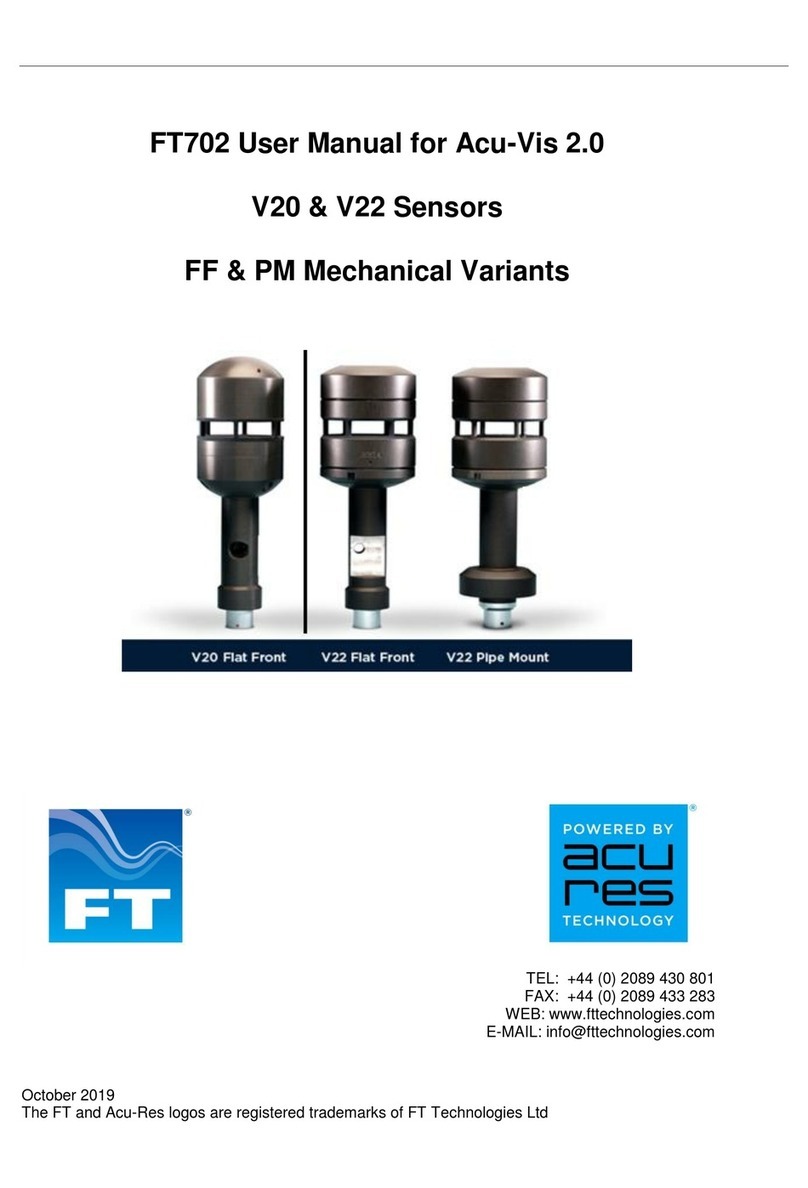
2FT702LT Flat Front Wind Sensor Manual
Contents
Product Symbols....................................................................................................... 3
1INTRODUCTION.................................................................................................. 6
1.1 Product Overview .............................................................................................................6
1.2 Build Versions and Labelling...........................................................................................6
1.3 Pipe Mount Sensor ...........................................................................................................7
1.4 Scope of Use.....................................................................................................................7
1.5 Disclaimer .........................................................................................................................8
2FUNCTIONAL DESCRIPTION ............................................................................ 9
2.1 Technical Performance.....................................................................................................9
2.2 Wind Speed Calibration..................................................................................................10
2.3 Wind Speed and Direction Filtering...............................................................................10
2.4 Electronic Rotation of the Datum Direction ..................................................................11
2.5 Error Detection................................................................................................................11
2.6 Heater Setup....................................................................................................................11
3INSTALLATION................................................................................................. 12
3.1 Connectivity ....................................................................................................................12
3.2 Description of Parts........................................................................................................14
3.3 Lightning protection and EMC.......................................................................................16
3.4 Inspection of the FT702LT..............................................................................................21
3.5 Fault Finding & Troubleshooting...................................................................................22
3.6 Returns............................................................................................................................22
4EVALUATION.................................................................................................... 23
4.1 Evaluation Pack ..............................................................................................................23
4.2 Acu-Vis Software ............................................................................................................23
4.3 FT054 Evaluation Cable..................................................................................................24
4.4 Quick Start Steps............................................................................................................24
5SENSOR COMMUNICATION............................................................................ 26
5.1 Introduction.....................................................................................................................26
5.2 Configuring the FT702LT................................................................................................26
5.3 Communication...............................................................................................................26
6PARAMETER SETTINGS.................................................................................. 30
6.1 Command Types.............................................................................................................30
6.2 User Calibration Table....................................................................................................32
6.3 Timing Constraints .........................................................................................................33
6.4 Command Parameters....................................................................................................34




























